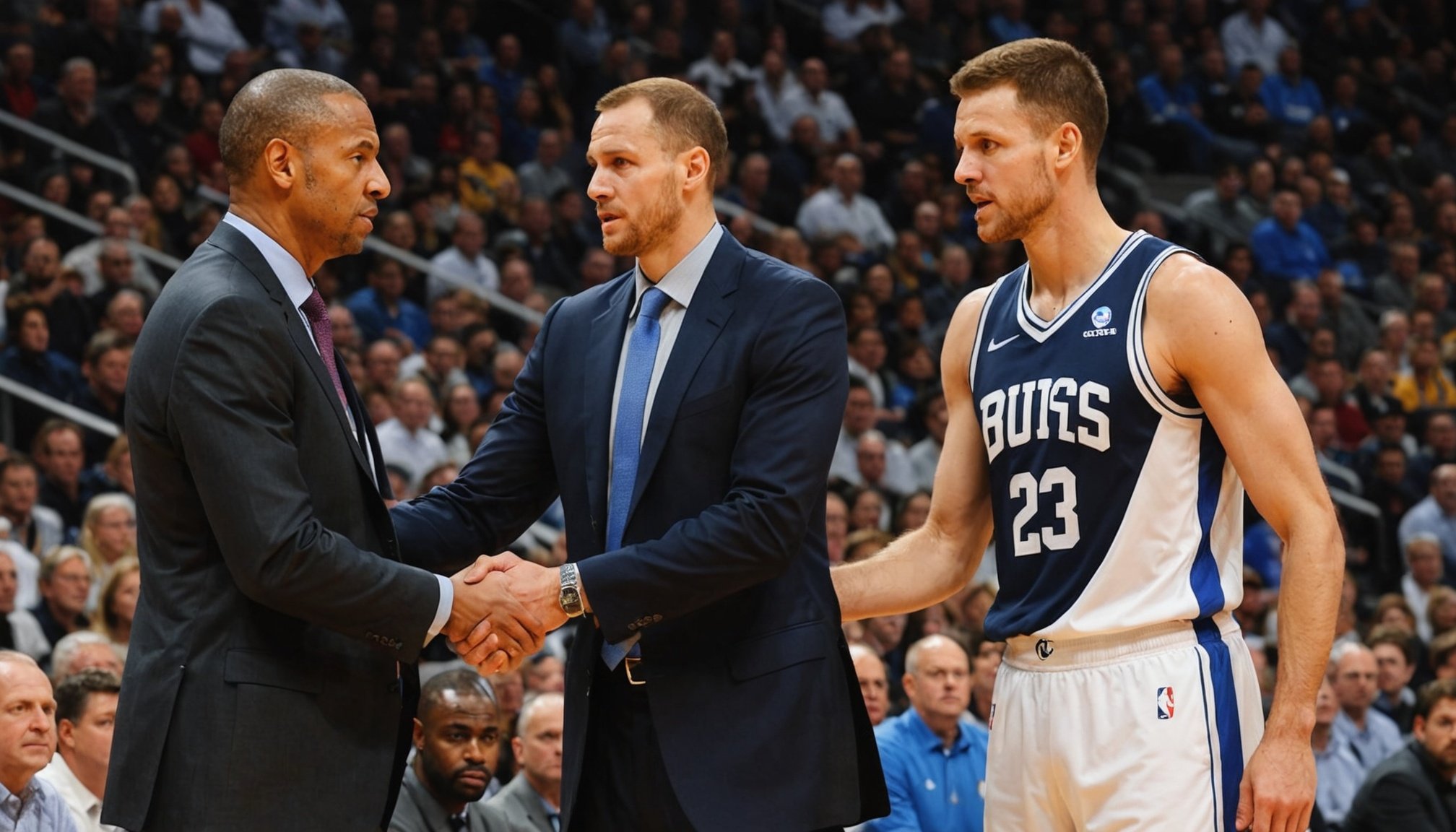Basketball is a global sport that has captured the hearts of millions. Whether you are a fan of the NBA or European leagues, the passion for the game is ubiquitous. However, one of the most intriguing aspects of basketball lies in the coaching styles that vary significantly between these two prominent regions. This article delves into the key differences in coaching styles between NBA and European basketball, providing you with an in-depth understanding of how coaches influence the game and the development of players in these contrasting environments.
Coaching Philosophy: NBA vs. European Leagues
To appreciate the differences in coaching styles, it’s crucial to first examine the underlying philosophies that guide NBA and European coaches. In the NBA, the focus is often on offensive strategies that capitalize on individual talent and athleticism. Coaches in the NBA tend to encourage players to express themselves freely, relying on their instincts and skills to create scoring opportunities. This approach fosters a fast-paced, high-scoring game where players are often given the freedom to innovate.
Also read : Top Advanced Shooting Drills for UK Basketball Players to Enhance Three-Point Precision
Conversely, European basketball emphasizes a more structured and disciplined approach. Coaches prioritize team play over individualism, stressing the importance of ball movement and tactical execution. In this environment, the development of a cohesive team unit is paramount. Coaches in European leagues often utilize elaborate plays and formations to maximize the collective strength of the team. This method not only enhances the game’s strategic complexity but also fosters a greater sense of unity among players.
As you can see, these differing philosophies shape how coaches approach the game. In the NBA, the emphasis is heavily on exploiting individual talent, while European coaches focus on creating a collective team dynamic. This distinction lays the groundwork for various other differences in coaching styles, tactics, and player development.
Also to read : Accelerate your game: effective techniques for uk basketball athletes to boost speed and reflexes in defensive situations
Player Development and Training Regimens
One of the most significant areas where NBA and European coaching styles diverge is in player development and training regimens. In the NBA, the focus on immediate results often leads to a more transactional approach to player development. Coaches are under constant pressure to win games, which can result in a shorter leash for young players. As a result, they may prioritize playing established stars over developing younger talent. This dynamic can sometimes inhibit the growth of promising newcomers, as they may not receive the necessary minutes on the court to hone their skills.
On the other hand, European basketball places a greater emphasis on long-term development. Coaches in European leagues often value the progression of their players over immediate victories. This philosophy encourages patience and investment in young talent, allowing them to gain valuable experience through consistent playing time. European teams frequently utilize a tiered system of leagues, where players can gradually ascend through various levels of competition, gaining crucial game experience along the way.
Moreover, training regimens in Europe tend to be more rigorous and comprehensive. Coaches often focus on developing fundamental skills, emphasizing the importance of technique and teamwork. Practices are designed to cultivate well-rounded players who can excel in all aspects of the game. This focus on fundamentals may not yield immediate results, but it often leads to more versatile players who can adapt to different playing styles and systems.
In summary, the differences in player development and training regimens highlight contrasting priorities between NBA and European coaches. While the NBA may lean towards immediate success, European basketball prioritizes long-term growth and skill development.
Tactical Approaches and Game Strategy
Tactics and game strategy are crucial elements that differentiate NBA and European coaching styles. NBA coaches typically favor offensive systems that leverage the athleticism and skill of their players. Isolation plays, pick-and-roll actions, and three-point shooting are hallmarks of NBA tactics. This style of play creates opportunities for players to exploit mismatches and generate scoring chances. Coaches champion creativity and improvisation, allowing players to make quick decisions based on their instincts.
In contrast, European basketball employs a more structured approach to tactics. Coaches emphasize the importance of spacing, ball movement, and player positioning. The European game is often characterized by intricate passing sequences and the utilization of off-ball screens to create open shots. Coaches meticulously plan for every aspect of the game, from offensive sets to defensive schemes. This strategic depth requires players to have a strong understanding of their roles and responsibilities on the court.
Moreover, the defensive strategies in both leagues further highlight their differences. NBA teams often rely on athleticism and one-on-one defense, whereas European teams prioritize team defense and communication. Coaches in Europe emphasize the need for players to work together defensively, closing passing lanes and rotating effectively. This fosters a more disciplined and cohesive defensive unit, mitigating the impact of individual player errors.
In conclusion, the tactical approaches and game strategies employed by NBA and European coaches reflect their respective philosophies. While the NBA celebrates individual creativity and athleticism, European basketball champions strategic depth and team-centric play.
Cultural Influences on Coaching Styles
The cultural backdrop of basketball coaching cannot be overlooked when analyzing the differences between NBA and European styles. The NBA is deeply embedded in American culture, where individualism and personal achievement are celebrated. This cultural influence manifests in the coaching styles prevalent in the league. Coaches often encourage players to showcase their talents, prioritizing personal accolades and scoring records. The atmosphere is competitive, with a significant emphasis on winning, which aligns with the broader American ethos of striving for success.
In stark contrast, European basketball is influenced by a more collectivist culture. Coaches emphasize the importance of teamwork, cooperation, and shared success. This cultural outlook shapes how players are trained and how they interact on the court. In Europe, there is a strong sense of community, and the success of the team often takes precedence over individual performance. This cultural dimension fosters a different kind of camaraderie among players, who are encouraged to support one another both on and off the court.
Furthermore, the relationship between coaches and players varies significantly between the two regions. In the NBA, the coach-player dynamic can sometimes be hierarchical, with coaches exerting authority over their players. Conversely, European coaches often adopt a more collaborative approach, valuing input from their team members. This fosters an environment where players feel empowered to contribute to discussions about tactics and strategies.
Ultimately, these cultural influences play a significant role in shaping coaching styles in both the NBA and European leagues. Understanding these cultural nuances provides valuable context for the differing approaches to basketball coaching and player development.
Conclusion: Embracing Different Coaching Styles
In conclusion, the differences in coaching styles between NBA and European basketball are rooted in various factors, including coaching philosophies, player development strategies, tactical approaches, and cultural influences. While the NBA champions individual talent and offensive creativity, European basketball emphasizes teamwork, strategic depth, and long-term growth.
As the game of basketball continues to evolve, there is much to learn from both coaching styles. Each approach offers unique insights into how to cultivate skilled players and create successful teams. By embracing the strengths of both NBA and European coaching styles, coaches and organizations can enhance their methods, ultimately leading to the development of more well-rounded players and a richer basketball experience for fans across the globe.











